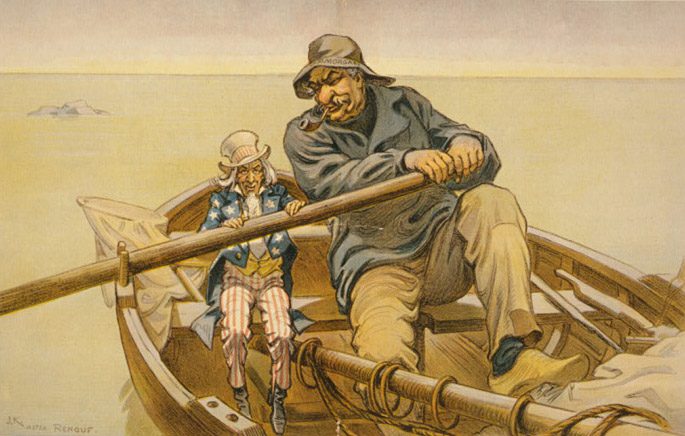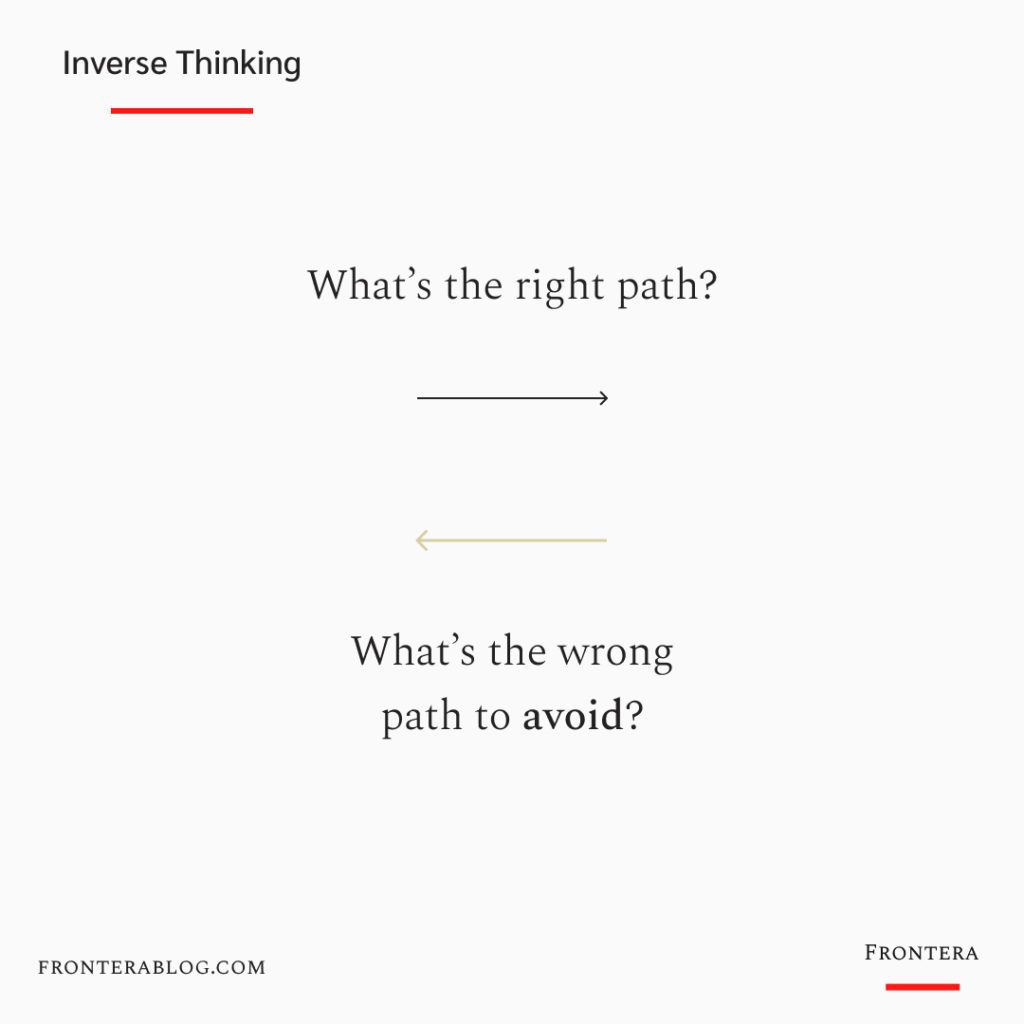Inverse thinking is a mental model that can help you make better decisions and solve complex problems.
In this article, you’ll find a short story from US history to explain the idea. And how to use inverse thinking in business and life with examples.
In 1907, the nightmare of every banker came true in the US.
Bank runs.
After several trusts went bankrupt, people lost confidence in the financial system.
So everybody ran to the banks to withdraw their money.
It wasn’t one bank or city.
Imagine thousands of people waiting in front of all bank branches across the country.
So banks couldn’t keep up with withdrawal requests and started ceasing operations.
And what happens when banks can’t give you your money?
Yes, panic.
The stock market went down 50%, and the interest rate reached 100%.
It was one of the worst crises in US history.
The whole financial system came to the verge of collapse.
But then…
A superhero came to the rescue as in Marvel movies.
A 70-year-old banker, J.P Morgan.
He pledged his own money to the banks of Wall Street to ease the liquidity pressure.
And he led some other wealthy people to do the same.
His efforts kept the New York Stock Exchange open and resolved the crisis.
The panic stopped.
And the financial system of the US survived thanks to one person.
Now imagine how the government felt.
While they were desperate, an individual managed to save the country from a disaster.
Newspapers made fun of the situation.

This trauma made the government stop and think:
“How can we avoid this disaster from happening again?”
The Power of Inverse Thinking
For years, governments had implemented policies to strengthen the US financial system and economy.
But those policies didn’t prevent the near-collapse of 1907.
Only when they thought inversely to avoid another disaster, they came up with the best idea.
They founded the Federal Reserve System (FED) to act as a lender of last resort.
And to regulate the trusts and banks.
The FED provided the financial infrastructure that made the US survive other crises.
And become the financial center of the world.
Yes, it’s not perfect.
But complex problems —like economic policies, business decisions, or what to do with our lives— don’t have perfect solutions.
So it’s easier to find the right path by avoiding the negative.
And that’s what inverse thinking is.
You think about the negative outcomes, and make decisions to avoid them.

Inverse thinking is a simple yet invaluable tool.
Now let’s see how to use it in business and life with inverted questions:
Examples of Inverse Thinking
1. Inversion in Business
Back in the 90s, Yahoo was the search engine leader.
But when users searched on Yahoo, they had to go through many irrelevant results to get to what they were looking for.
Larry Page and Sergey Brin wondered how they can avoid showing irrelevant results.
Framing the problem this way made them realize a pattern.
Like academic papers, low-quality pages didn’t have many other websites referencing them.
On the internet, references were links.
So they created the PageRank algorithm that ranked sites based on backlinks.
This increased the chance of users finding what they were looking for in the first few results.
And Google beat Yahoo in the search game.
Besides solving specific problems, you can use other inverted questions to get closer to the right path in business:
- How can we increase customer churn?
- How can we make our website less user-friendly?
- How can we create a hostile working environment?
- How can we create a new product that no one wants?
- How can we make our products harder to find and buy?
Now, these questions sound strange.
But they are so easy to answer.
Think about your answers, and avoid them at all costs.
2. Inversion in Personal Life
Yesterday I talked with a friend.
He told me he rejected a promotion as he knew the role was not for him.
Despite all his colleagues wanting that position.
I admired his courage to say no.
And to resist mimetic desires.
He thought that role would make his life miserable.
So he avoided it.
Many people try to find the best career path or the best business to start.
That’s hard.
Because the options are too broad.
But it’s easy to know what you don’t want.
So use inverted questions to design your life.
Some examples:
- What can I do today to waste my time?
- What purchases can I make to ruin my finances?
- What habits can I build to become unhealthy in 5-10 years?
- What decisions can I make (or not make) to have regrets in the future?
- What can I work on this week to feel busy but get no concrete results?
Let’s finish with a quote from Charlie Munger — who is one of the biggest advocates of inverse thinking.
“All I want to know is where I’m going to die, so I’ll never go there.”
–
Enjoyed this article?
Then you’ll love the How Brands Win Newsletter.
Get the “5 Mental Models to Differentiate Your Business” guide when you join. It’s free.
